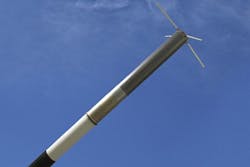Officials of the U.S. Naval Surface Warfare Center (NSWC) Crane Division in Crane, Ind., announced a potential $9.2 million order Friday to BAE Systems Australia for the support and advancement of the MK-53 Nulka electronic decoy cartridges and launchers.
The U.S. Navy and Royal Australian Navy deploy the MK-53 Nulka decoy launching system as a rapid-response active expendable decoy designed to defend ships as large as cruisers against modern radar homing anti-ship missiles.
Related: How vulnerable are U.S. Navy vessels to advanced anti-ship cruise missiles?
The Nulka is designed to counter radar-guided anti-ship missiles with passive decoy rejection and active angular deflection electronic countermeasures rejection capabilities, which can defeat metal chaff-based ship defenses.
The missile-defense system can be integrated with shipboard combat systems or used by itself. The DLS MK 53 Mod 4 is a modified DLS MK 36 Mod 12 by the addition of two Nulka launching tubes to each of the four MK 137 Mod 2 launchers and a Decoy Launch Processor.
The Nulka decoy is a broadband RF repeater attached to a hovering rocket that radiates a large, ship-like radar cross section while flying a trajectory designed to lure incoming anti-ship missiles from their intended targets.
The decoy uses a microprocessor autopilot and thrust vector control. The system primarily is for ship classes without active electronic warfare suite.
The system is designed for continuous upgrades to counter evolving threats. It is for Arleigh Burke-class destroyers, Ticonderoga-class cruisers, Whidbey Island-class dock landing ships, San Antonio-class amphibious assault ships, and future surface warships.
The upcoming contract to BAE Systems Australia, outlined in a sole-source presolicitation (N0016415RWM63) issued Friday, is for five years, and may include research and development, engineering and logistics support services, test and evaluation, maintenance and repair, purchase of test equipment, purchase of parts and spare parts, ordnance alterations, safety and security services, software, and data.
Related: Navy chooses contract manufacturer Sechan to build components for ship self-defense system
For questions or concerns contact NSWC Crane's John Burkhardt by email at [email protected], or by phone at 812-854-8879. More information is online at https://www.fbo.gov/spg/DON/NAVSEA/N00164/N0016415RWM63/listing.html.



